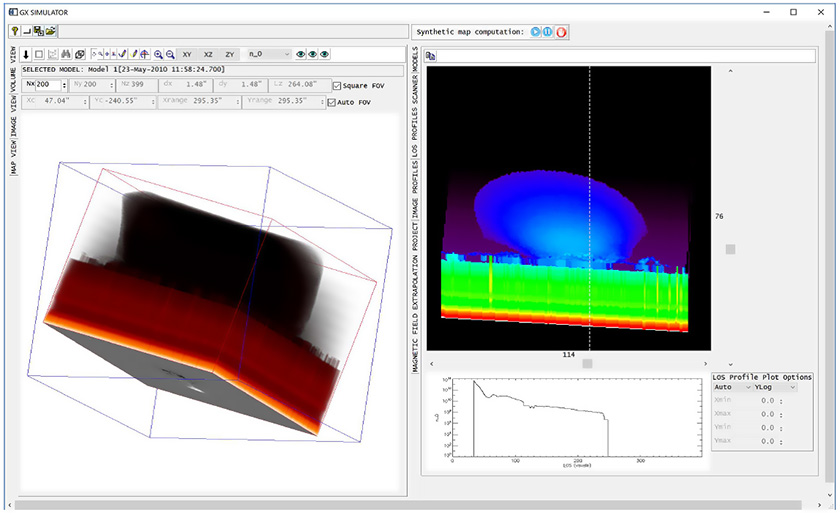How to use 3D models from this repository
3D models developed under this project and collected in this repository are built on top of coronal magnetic reconstructions performed using potential, linear, or nonlinear force-free field (NLFFF) extrapolations. The magnetic skeleton obtained from this reconstruction is than ‘dressed’ with the thermal plasma as described in Nita et al. (2017; to be submitted) in case of modeling the thermal structure of active regions (ARs) and with flaring flux tubes in case of flares (Nita et al. 2015). Models developed for older events (pre-SDO era) employ typically potential or linear extrapolations starting from LOS magnetorgams; these models must be used in the GX Simulator in the ‘TOP VIEW’ mode. Models for more recent events (built with the use of vector magnetograms) must be treated with their actual view. Below, a few simple steps needed to get started with the use of the 3D models are described.

1. Needed soft: IDL (8.0 or above)/SSW + GX_Simulator (preinstalled from SSW/packages: Solar software http://www.lmsal.com/solarsoft/).
2. Save all provided files for a model of interest in a local folder.
3. Launch GX_Simulator: IDL> GX, n [hit ‘Enter’]; n=1,2,3 – the number of desired parallel threads launched simultaneously. If IDL> GX is used (no n specified) the tool will determine how many threads are available at your computer and use this number as default.
4. Use ‘Upload Saved Model’ (blue arrow) button to upload a model and then use GX Simulator functionality to view or modify the model and compute emissions from it.

5. Each model typically comes with its own ‘How to use’ readme file, which describes any specificity of the given model (in particular, if this is a top-view model or not).
6. Typically, each model is associated with a publication, where this model was introduced. Please, cite this associated paper while using these models.

